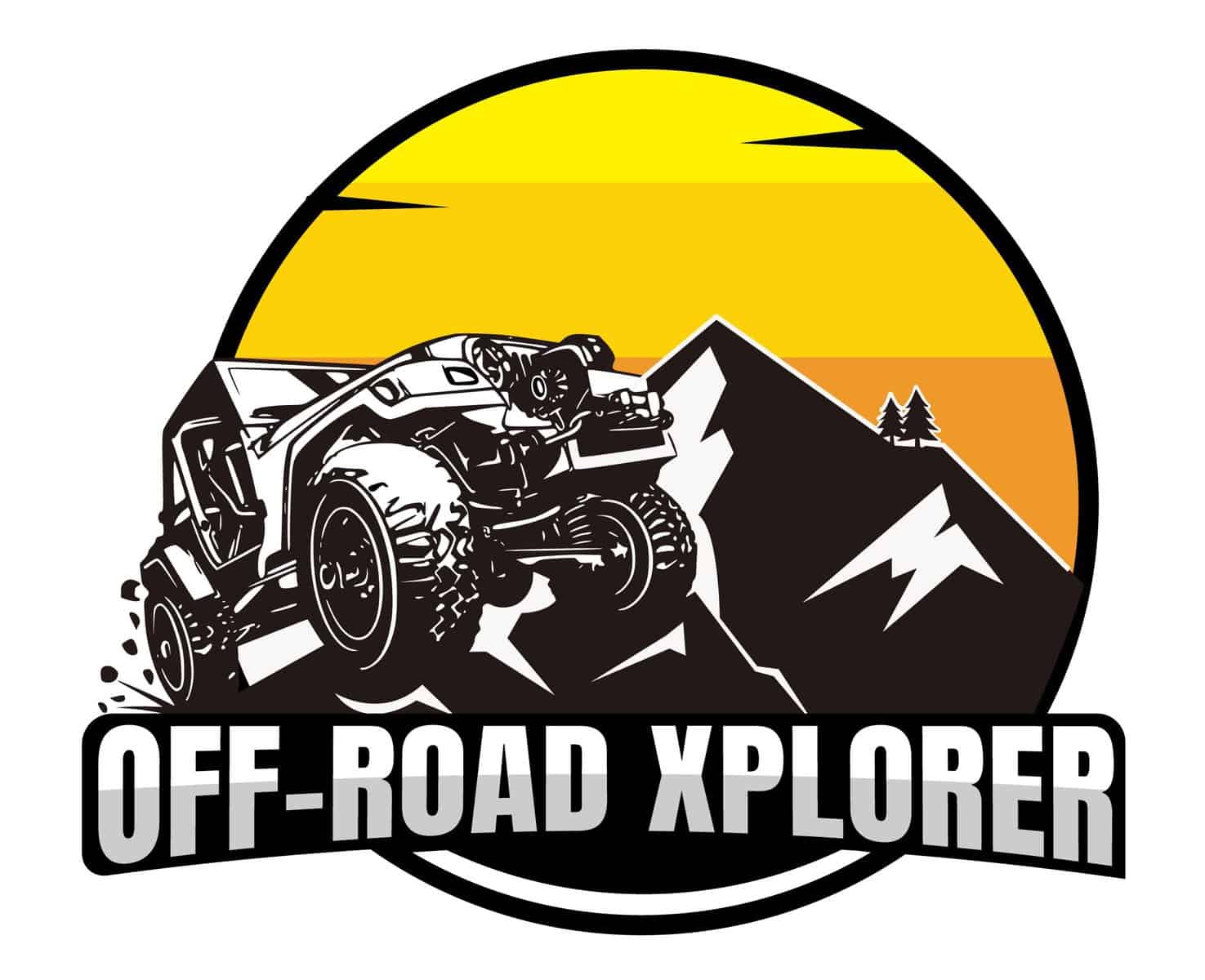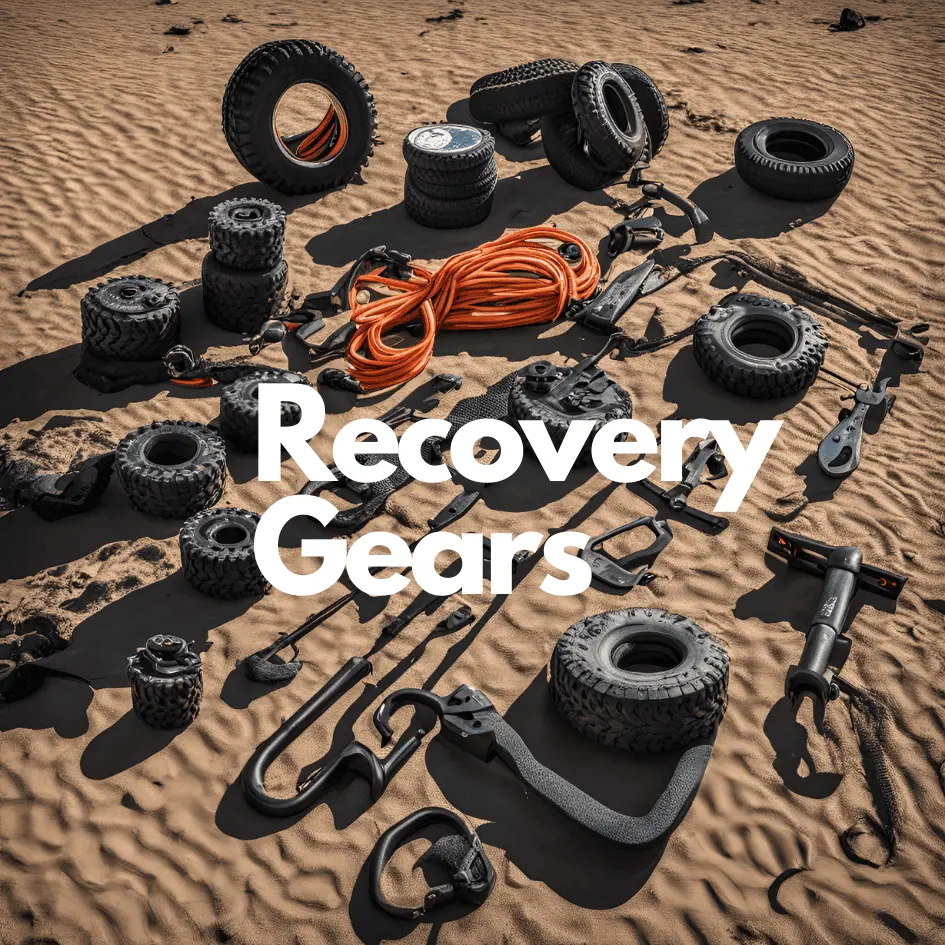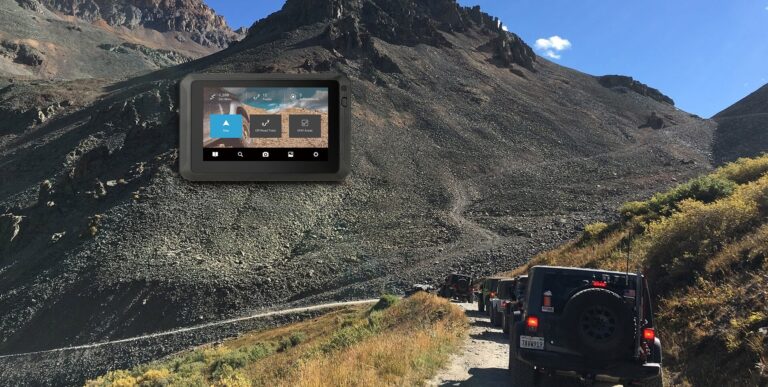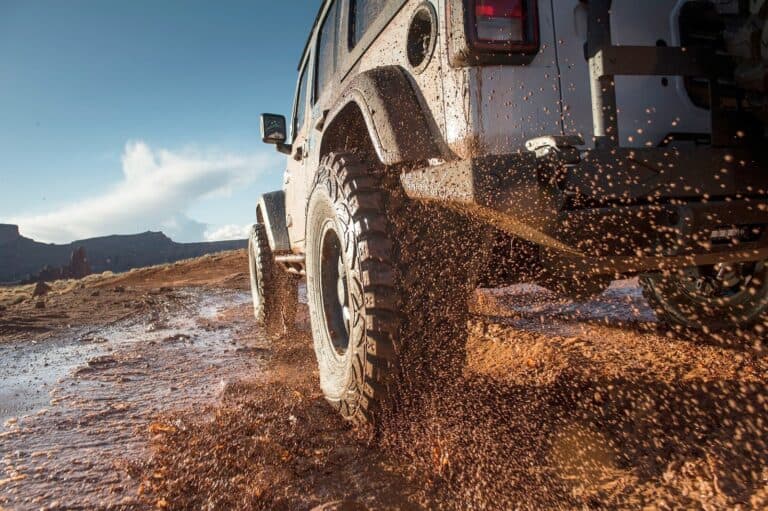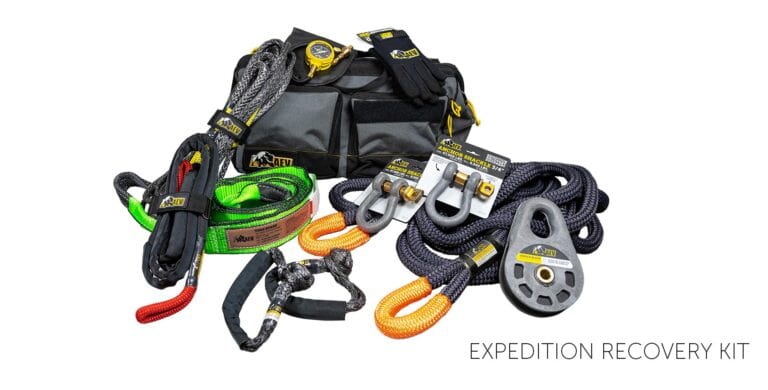Off Road Recovery Gear: Essential Tools for Every Adventurer
Off-road adventures can be thrilling yet unpredictable, with getting stuck in mud, sand, or rocky paths being a common scenario. Off road recovery gear is essential for safely extracting your vehicle from tough spots, ensuring safety and preventing damage.
Key tools include tow straps, winches, recovery boards, and shackles, which provide the leverage and strength needed to retrieve a trapped vehicle. Always carry a basic toolkit and know how to use each item effectively. Quality recovery gear not only enhances your safety but also elevates your overall off-roading experience, allowing you to tackle any situation with confidence.
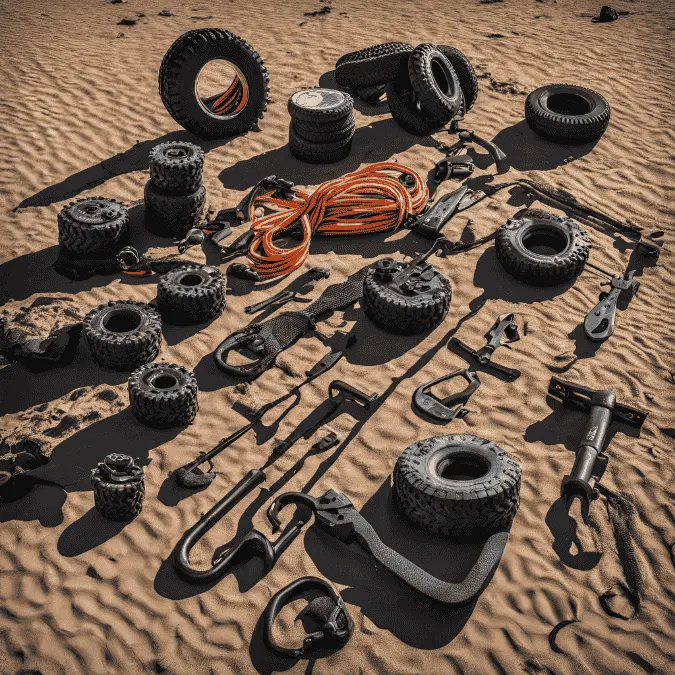
Essential Gear List
Exploring off-road trails can be thrilling, but getting stuck is inevitable. To ensure you’re prepared for any situation, having the right recovery gear is crucial. This essential gear list will guide you through the must-have tools and safety equipment needed for a safe and successful off-road adventure.
Must-have Tools
When venturing off-road, having the right tools can mean the difference between a minor hiccup and a major disaster. Here are some must-have tools to include in your recovery gear:
Recovery Straps: These heavy-duty straps help pull your vehicle out of mud, sand, or snow. Ensure they have a high weight rating.
Winch: A reliable winch is essential for self-recovery. Choose one with a capacity that exceeds your vehicle’s weight.
Shackles: D-ring or bow shackles connect recovery straps to your vehicle. Opt for high-quality, heavy-duty shackles.
Snatch Block: This pulley device increases the winch’s pulling power and allows for angled pulls.
Hi-Lift Jack: A versatile tool for lifting, winching, clamping, and spreading. Ensure you know how to use it safely.
Tool | Function |
|---|---|
Recovery Straps | Pulls vehicle out of tough spots |
Winch | Self-recovery by pulling vehicle |
Shackles | Connects straps to vehicle |
Snatch Block | Increases winch power |
Hi-Lift Jack | Lifts, winches, clamps, spreads |
Safety Equipment
Safety should always come first during off-road recovery. Equipping yourself with the right safety gear ensures you and your companions stay protected:
Gloves: Heavy-duty gloves protect your hands from cuts, bruises, and burns. They are essential for handling winch cables and recovery straps.
Recovery Damper: This weighted blanket reduces the risk of injury if a recovery strap or winch cable snaps. Place it over the strap or cable during recovery.
First Aid Kit: Always have a comprehensive first aid kit on hand. It should include bandages, antiseptics, pain relievers, and other basic medical supplies.
Fire Extinguisher: A fire extinguisher is crucial in case of vehicle fires. Ensure it is easily accessible and regularly checked.
Emergency Whistle: An emergency whistle helps signal for help if you’re stranded. It is a simple yet effective safety tool.
Safety Gear | Purpose |
|---|---|
Gloves | Protects hands from injuries |
Recovery Damper | Reduces injury risk from snaps |
First Aid Kit | Provides medical supplies |
Fire Extinguisher | Extinguishes vehicle fires |
Emergency Whistle | Signals for help |
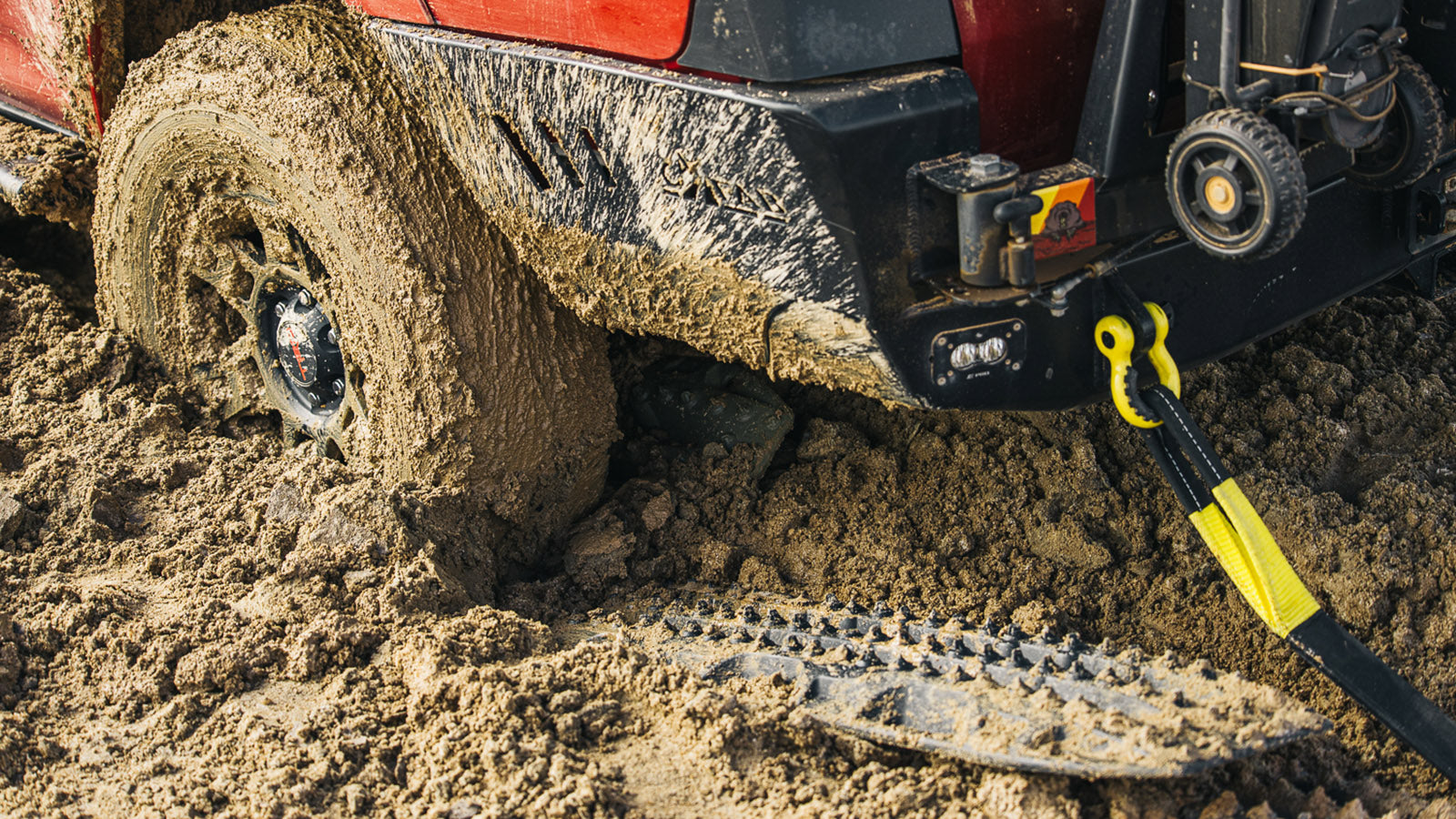
Credit: gofastcampers.com
Recovery Straps
Off road recovery gear is essential for any adventure into rugged terrains. Among the vital tools, recovery straps play a significant role in vehicle recovery operations. Designed to withstand immense pressure, these straps help extricate vehicles stuck in mud, sand, or snow. Understanding the different types of straps and how to use them safely ensures a successful recovery mission.
Types Of Straps
Recovery straps come in various types, each suited for specific recovery needs. Here are the main types:
Snatch Straps: These straps stretch under load, generating kinetic energy to pull a vehicle out of trouble.
Tow Straps: Tow straps are less elastic and ideal for towing a vehicle over a distance.
Tree Saver Straps: Used to anchor a winch to a tree, these straps protect the tree from damage.
Winch Extension Straps: These straps extend the reach of your winch, making it easier to anchor to a distant point.
Here’s a quick comparison table to help you choose the right type:
Type | Stretchability | Primary Use |
|---|---|---|
Snatch Straps | High | Vehicle recovery from mud, sand, snow |
Tow Straps | Low | Towing vehicles over distances |
Tree Saver Straps | None | Anchoring winches to trees |
Winch Extension Straps | Varies | Extending winch reach |
How To Use Them
Using recovery straps correctly is crucial for safety. Follow these steps for effective use:
Inspect the Strap: Check for any signs of wear and tear before use. A damaged strap can break under pressure.
Attach Securely: Attach the strap to the vehicle’s recovery points. Avoid using tow balls as they can snap off under load.
Clear the Area: Ensure bystanders are at a safe distance. Straps can snap and cause injury.
Use a Damping Device: Place a weighted object on the strap to prevent it from whipping if it breaks.
Apply Steady Pressure: Gradually apply pressure to the strap. Sudden jerks can cause damage or injury.
For snatch straps, build kinetic energy by speeding up slowly. For tow straps, keep a steady speed to tow the vehicle safely. Always follow the manufacturer’s guidelines for maximum load limits.
Winches Explained
When you’re off-roading, getting stuck is almost inevitable. That’s why having the right off road recovery gear is crucial. One of the most essential tools in your recovery kit is the winch. This section will dive into everything you need to know about winches.
Electric Vs. Hydraulic
Choosing between an electric winch and a hydraulic winch can be tricky. Each type has its pros and cons, suited for different needs and situations.
Electric Winches:
Power Source: Electric winches are powered by your vehicle’s battery.
Ease of Installation: They are relatively easy to install and use.
Maintenance: They require less maintenance compared to hydraulic winches.
Cost: Generally, electric winches are more affordable.
Hydraulic Winches:
Power Source: Hydraulic winches use your vehicle’s power steering pump.
Performance: They offer consistent performance without overheating.
Durability: Hydraulic winches are more durable and reliable.
Installation: They are harder to install and usually require professional help.
Feature | Electric Winch | Hydraulic Winch |
|---|---|---|
Power Source | Vehicle Battery | Power Steering Pump |
Cost | More Affordable | Expensive |
Ease of Installation | Easy | Hard |
Maintenance | Low | High |
Choosing The Right Winch
Picking the right winch for your vehicle involves considering several factors. Your choice will affect your off-road experience.
Calculate your vehicle’s weight including gear and passengers.
Your winch should have a pulling capacity of 1.5 times your vehicle’s weight.
Steel Cable: Strong and durable but heavy and prone to rust.
Synthetic Rope: Lightweight and easy to handle but requires more maintenance.
Wired Remote: Offers a direct connection but limits mobility.
Wireless Remote: Provides more flexibility but can be less reliable.
Set a budget based on your needs.
Remember to factor in installation and maintenance costs.
Use this guide to find the perfect winch for your off-road adventures. Stay safe and prepared!
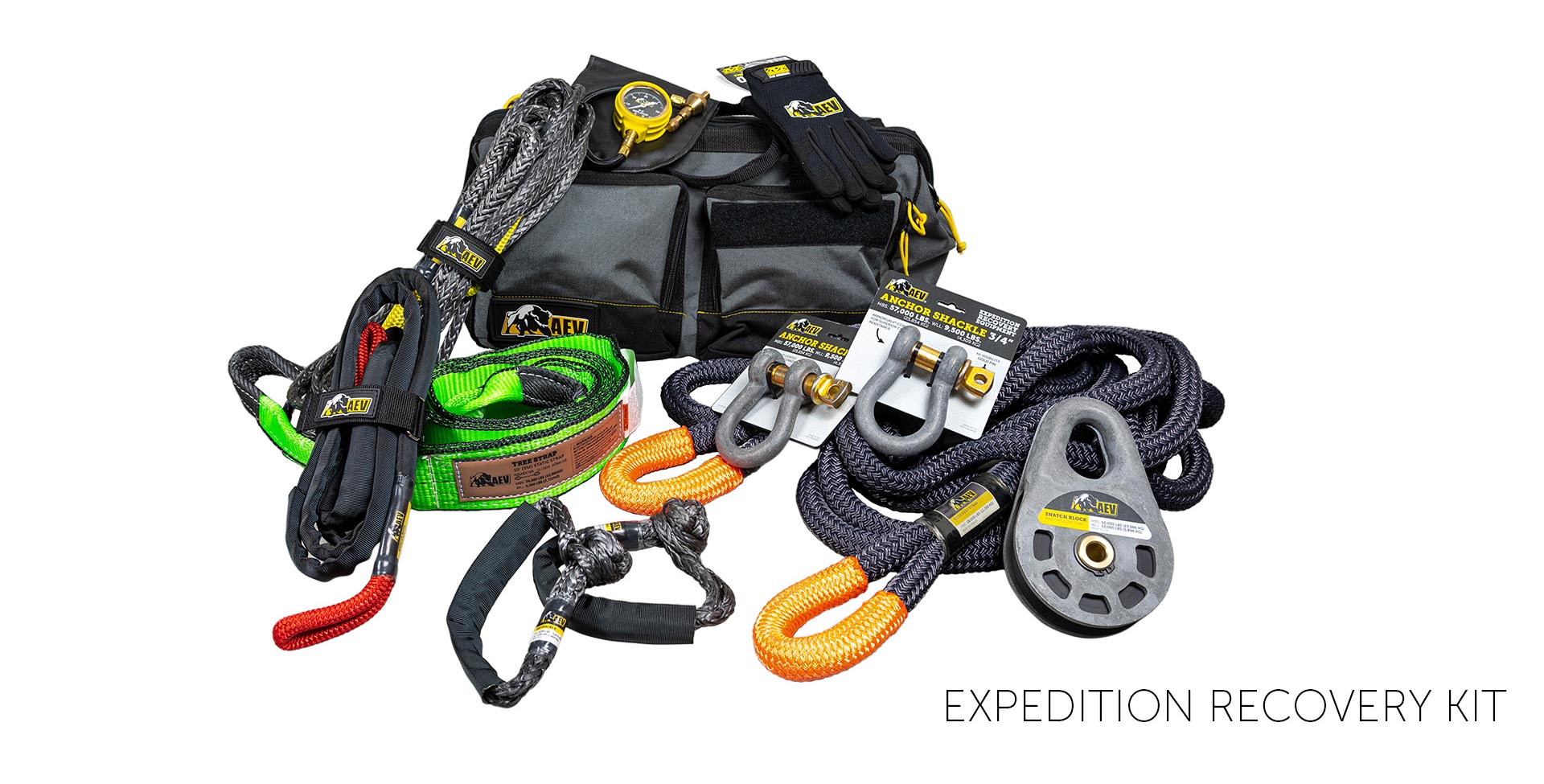
Credit: www.aev-conversions.com
Dollies And Tracks
When off-roading, having the right recovery gear is crucial. Dollies and tracks are essential tools to help you get out of tough spots. They provide support and traction when your vehicle gets stuck in mud, sand, or snow. Let’s dive into the different types of dollies and how to use tracks effectively.
Types Of Dollies
Dollies come in various shapes and sizes, each designed for specific recovery scenarios. They help move vehicles that can’t drive themselves due to damage or challenging terrain.
Standard Dollies: These are simple platforms with wheels. They lift one end of the vehicle, allowing it to be towed.
Hydraulic Dollies: These use hydraulic systems to lift the vehicle. They provide more control and are easier to use.
Off-Road Dollies: Designed for rough terrain, these dollies have larger wheels and more robust frames.
Type | Best For | Features |
|---|---|---|
Standard Dollies | Flat surfaces | Simple, easy to use |
Hydraulic Dollies | Various terrains | Hydraulic lift, more control |
Off-Road Dollies | Rough terrain | Large wheels, sturdy frame |
Choosing the right dolly depends on the terrain and the vehicle’s condition. Off-road dollies are the best for challenging environments. Hydraulic dollies offer ease of use and precision. Standard dollies are good for simpler, flat surfaces.
Using Tracks Effectively
Tracks are essential for gaining traction in slippery or loose conditions. They can be used in mud, snow, and sand to help your vehicle move forward.
Here are some tips for using tracks effectively:
Positioning: Place the tracks in front of the tires. Ensure they are aligned for optimal traction.
Engage Low Gear: Use low gear to drive onto the tracks. This ensures better control and reduces the risk of spinning tires.
Steady Acceleration: Apply steady pressure on the accelerator. Avoid sudden bursts of speed to prevent the tracks from slipping.
For best results, use tracks designed for your specific vehicle type. Heavy-duty tracks are suitable for larger vehicles, while lightweight tracks work well for smaller ones.
Track Type | Best For | Material |
|---|---|---|
Heavy-Duty Tracks | Large vehicles | Metal or reinforced plastic |
Lightweight Tracks | Small vehicles | Plastic or rubber |
Flexible Tracks | All vehicle types | Flexible rubber or composite |
Using tracks can make the difference between getting stuck and getting home. Always carry a set of tracks in your off road recovery gear.
Shovels And Tools
Off-roading is an adventure full of challenges and excitement. Having the right recovery gear can make all the difference between a great day and a frustrating experience. Shovels and tools are essential components of any off-road recovery kit. These items are versatile, durable, and can help you get out of sticky situations.
Best Types Of Shovels
Choosing the right shovel for off-road recovery is crucial. You need a tool that is both sturdy and portable. Here are some of the best types of shovels to consider:
Folding Shovels: These shovels are compact and easy to store. They fit neatly in your vehicle without taking up much space.
Military Entrenching Tools: Designed for heavy-duty use, these shovels are strong and durable. They often come with additional features like saw edges.
Long-handled Shovels: Ideal for digging out deeper ruts. They offer more leverage and are great for moving larger amounts of dirt or sand.
Below is a table that highlights the key features of each type of shovel:
Shovel Type | Portability | Durability | Best Use |
|---|---|---|---|
Folding Shovel | High | Moderate | Compact storage, light digging |
Military Entrenching Tool | Moderate | High | Heavy-duty digging, versatile |
Long-handled Shovel | Low | High | Deep digging, moving large amounts |
Additional Tools To Carry
In addition to shovels, carrying other essential tools can significantly improve your off-road recovery experience. Here are some must-have items:
Recovery Straps: These straps are used to pull your vehicle out of tough spots. Make sure they are rated for your vehicle’s weight.
Winches: A powerful winch can be a lifesaver. It helps pull your vehicle out of deep mud or sand.
Traction Mats: These mats provide extra grip. Place them under your tires to gain traction in slippery conditions.
Hi-Lift Jacks: These jacks are versatile. Use them to lift your vehicle, change tires, or get unstuck.
Here is a summary of these tools and their uses:
Tool | Primary Use |
|---|---|
Recovery Straps | Towing and pulling |
Winches | Heavy-duty vehicle recovery |
Traction Mats | Improving tire grip |
Hi-Lift Jacks | Lifting and recovery |
Equipping yourself with these tools ensures you are prepared for any off-road challenge. Always check the condition of your gear before setting out on an adventure.
Tire Repair Kits
Off-road adventures can be thrilling and exciting, but they also come with their challenges. One essential piece of off-road recovery gear is the Tire Repair Kit. These kits can be lifesavers when you’re far from civilization and experience a tire puncture or blowout. Let’s check out the importance of tire kits and what you should include in them.
Importance Of Tire Kits
Tire repair kits are crucial for off-road enthusiasts. They ensure you can handle unexpected tire issues swiftly. Without a tire kit, a simple puncture could leave you stranded for hours. Here are a few reasons why they are important:
Immediate Repairs: You can fix punctures right on the trail.
Safety: Avoid being stuck in remote, potentially dangerous locations.
Cost-Effective: Saves money on towing services.
Convenience: No need to rely on help from others.
Consider this scenario: You’re exploring a rugged trail when a sharp rock punctures your tire. With a tire repair kit, you can address the problem quickly and continue your adventure. Without one, you might be forced to wait for rescue, which could take hours or even days.
Having a tire repair kit also boosts confidence. You know that minor tire issues won’t derail your trip. This peace of mind is invaluable for any off-road enthusiast.
What To Include
A comprehensive tire repair kit should contain several essential items. These tools and materials will help you tackle most tire issues effectively. Here’s what you should include:
Tire Plugs: Useful for sealing punctures.
Plugging Tool: Helps insert plugs into the tire.
Air Compressor: Re-inflates the tire after repair.
Tire Pressure Gauge: Ensures the tire is properly inflated.
Valve Stem Tool: Removes and replaces valve cores.
Lubricant: Eases the insertion of plugs.
Razor Blade: Trims excess plug material.
Here’s a table summarizing these items:
Item | Function |
|---|---|
Tire Plugs | Seal punctures |
Plugging Tool | Insert plugs |
Air Compressor | Inflate tires |
Tire Pressure Gauge | Check tire pressure |
Valve Stem Tool | Replace valve cores |
Lubricant | Ease plug insertion |
Razor Blade | Trim plugs |
Including these items in your tire repair kit ensures you are well-prepared for most tire-related issues. Remember, the key to a successful off-road trip is being prepared for anything.
First Aid Kits
Off-road adventures are thrilling, but they come with risks. Off road recovery gear is essential to ensure safety and preparedness. One crucial piece of gear you should never overlook is the First Aid Kit. Having a well-stocked first aid kit can mean the difference between a minor scrape and a serious injury. Let’s explore what makes a first aid kit indispensable and how to customize it for your specific needs.
Essential Items
A first aid kit is more than just bandages. It should have a variety of items to cover different types of injuries and emergencies. Here are some very essential items you should include:
Bandages: Assorted sizes for cuts and scrapes.
Gauze Pads: For larger wounds.
Antiseptic Wipes: To clean wounds.
Adhesive Tape: To secure bandages.
Scissors: For cutting tape or clothing.
Tweezers: For removing splinters or debris.
Pain Relievers: Ibuprofen or acetaminophen.
Antibiotic Ointment: To prevent infection.
Hydrocortisone Cream: For bug bites and rashes.
Instant Cold Packs: To reduce swelling.
Consider adding a small first aid manual. This guide can help you handle different types of injuries effectively. Remember, every second counts in an emergency.
Customizing Your Kit
Every off-road adventure is unique, and so are the risks. Customizing your first aid kit ensures you are prepared for the specific challenges you might face. Here are some tips for customizing your kit:
Assess Your Needs: Think about the types of activities you will be doing. If you plan to hike, include blister pads and extra bandages.
Personal Medications: Include any prescription medications you or your companions might need.
Environmental Risks: Consider the environment. If you are going to a bug-prone area, pack extra insect repellent and antihistamines.
Size and Weight: Customize the size of your kit based on the space available in your vehicle. Use compact containers to save space.
Regularly Update: Check your kit before each trip. Replace expired medications and used items.
Here’s a table summarizing the customization tips:
Customization Tip | Details |
|---|---|
Assess Your Needs | Think about planned activities. |
Personal Medications | Include all necessary prescriptions. |
Environmental Risks | Pack items based on the environment. |
Size and Weight | Use compact containers to save space. |
Regularly Update | Check and replace expired items. |
Customization ensures you are prepared for any off-road challenge. Take the time to tailor your first aid kit to your specific needs. Safety should always be a priority.
Planning For Recovery
Off-road adventures bring excitement and challenges. The right off road recovery gear ensures you stay safe and prepared. Planning for recovery is crucial. It involves assessing risks and forming a recovery plan. Let’s dive deeper into these steps.
Assessing Risks
Before heading out, it’s essential to assess potential risks. Knowing the terrain, weather, and vehicle condition can prevent mishaps. Here’s how to evaluate risks effectively:
Terrain Type: Understand if you’re dealing with mud, sand, rocks, or snow. Each requires different strategies and gear.
Weather Conditions: Check the forecast. Rain or snow can change the difficulty of the terrain.
Vehicle Condition: Ensure your vehicle is in top shape. Check tires, engine, and essential fluids.
Experience Level: Be honest about your off-roading skills. Don’t attempt trails beyond your capability.
Use a table to categorize risks and necessary precautions:
Risk | Precaution |
|---|---|
Steep Hills | Use low gear; have a winch ready |
Muddy Terrain | Carry traction boards and a tow strap |
Snowy Paths | Use snow chains; keep a shovel handy |
Identifying these risks helps in preparing adequately. Always have a clear understanding of potential dangers before embarking on your journey.
Forming A Recovery Plan
With risks assessed, the next step is to form a recovery plan. This plan ensures you’re ready for any situation. Here’s how to create an effective recovery plan:
Gear Checklist: List all necessary recovery gear. Ensure you have items like a winch, tow straps, and a first aid kit.
Communication Plan: Inform someone about your trip details. Use GPS devices for location tracking.
Training: Familiarize yourself with using recovery gear. Practice using a winch or traction boards.
Emergency Contacts: Have a list of emergency contacts. Include local tow services and a friend or family member.
Here’s a simple checklist for your recovery plan:
Item | Purpose |
|---|---|
Winch | Pull vehicle out of tough spots |
Traction Boards | Provide grip in mud or sand |
Tow Straps | Tow vehicle safely |
First Aid Kit | Handle minor injuries |
GPS Device | Track and share location |
Being prepared with a recovery plan makes off-roading safer and more enjoyable. Always review your plan before each trip.
Frequently Asked Questions
What Is Off Road Recovery Gear?
Off road recovery gear includes tools and equipment for vehicle recovery in off-road situations. It ensures safety and efficiency.
Why Is Off Road Recovery Gear Important?
Recovery gear prevents vehicles from getting stranded. It enhances safety and ensures you can handle tough terrains effectively.
What Are Essential Off Road Recovery Tools?
Essential tools include recovery straps, winches, shackles, and traction boards. These tools help in various recovery scenarios.
How To Choose The Best Recovery Gear?
Choose gear based on your vehicle type and terrain. Quality and durability are crucial factors to consider.
Conclusion
Choosing the right off road recovery gear ensures safety and preparedness. Equip your vehicle with essential tools and stay ready for any adventure. Remember, the right gear makes all the difference. Invest wisely and enjoy your off-road experiences with confidence and peace of mind.
Stay safe and happy trails!
